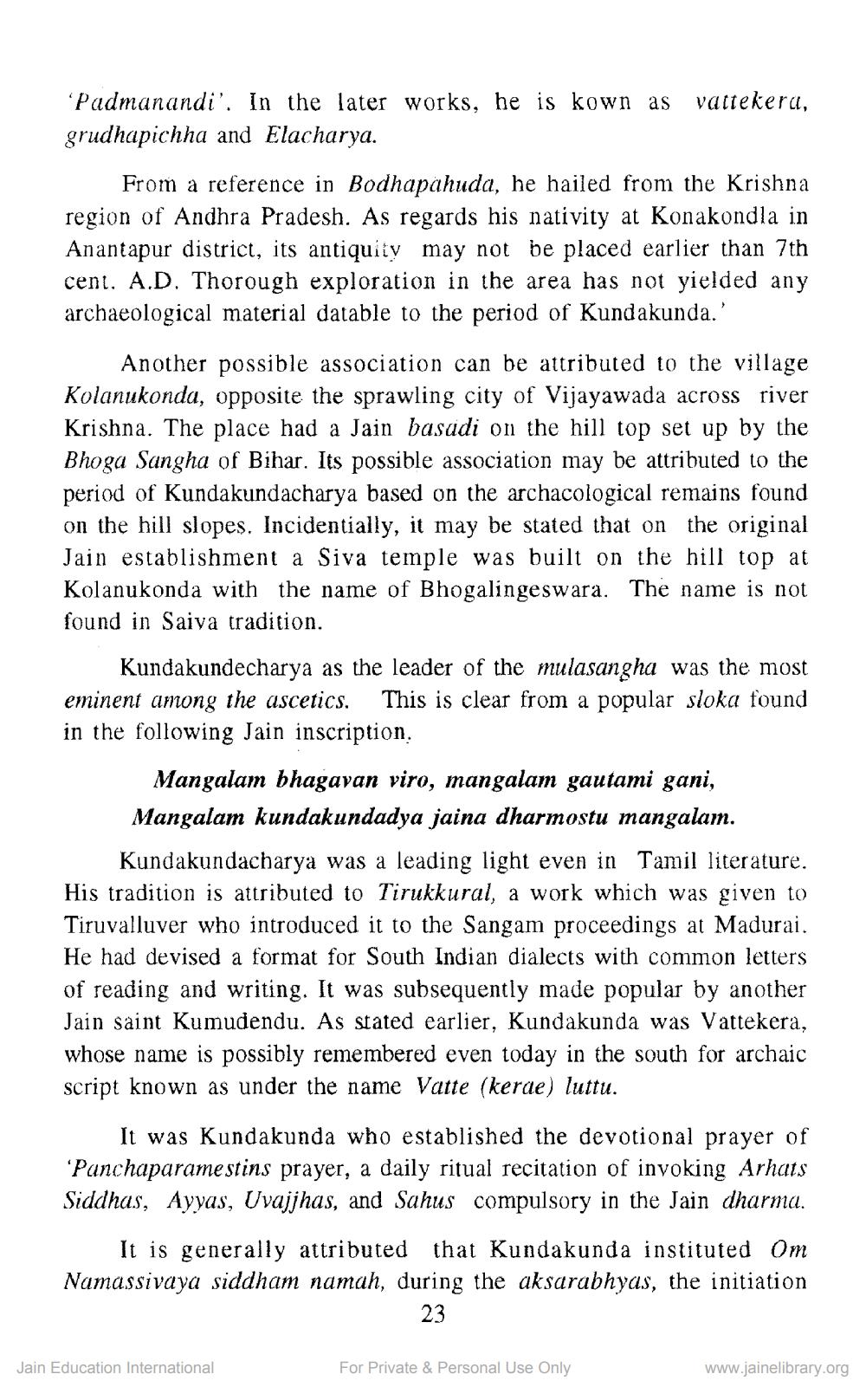________________
'Padmanandi'. In the later works, he is kown as vattekera, grudhapichha and Elacharya.
From a reference in Bodhapahuda, he hailed from the Krishna region of Andhra Pradesh. As regards his nativity at Konakondla in Anantapur district, its antiquity may not be placed earlier than 7th cent. A.D. Thorough exploration in the area has not yielded any archaeological material datable to the period of Kundakunda.'
Another possible association can be attributed to the village Kolanukonda, opposite the sprawling city of Vijayawada across river Krishna. The place had a Jain basudi on the hill top set up by the Bhoga Sangha of Bihar. Its possible association may be attributed to the period of Kundakundacharya based on the archacological remains found on the hill slopes. Incidentially, it may be stated that on the original Jain establishment a Siva temple was built on the hill top at Kolanukonda with the name of Bhogalingeswara. The name is not found in Saiva tradition.
Kundakundecharya as the leader of the mulasangha was the most eminent among the ascetics. This is clear from a popular sloka found in the following Jain inscription:
Mangalam bhagavan viro, mangalam gautami gani, Mangalam kundakundadya jaina dharmostu mangalam.
Kundakundacharya was a leading light even in Tamil literature. His tradition is attributed to Tirukkural, a work which was given to Tiruvalluver who introduced it to the Sangam proceedings at Madurai. He had devised a format for South Indian dialects with common letters of reading and writing. It was subsequently made popular by another Jain saint Kumudendu. As stated earlier, Kundakunda was Vattekera, whose name is possibly remembered even today in the south for archaic script known as under the name Vatte (kerde) luttu.
It was Kundakunda who established the devotional prayer of 'Panchaparamestins prayer, a daily ritual recitation of invoking Arhats Siddhas, Ayyas, Uvajjhas, and Sahus compulsory in the Jain dharma.
It is generally attributed that Kundakunda instituted Om Namassivaya siddham namah, during the aksarabhyas, the initiation
23
Jain Education International
For Private & Personal Use Only
www.jainelibrary.org




